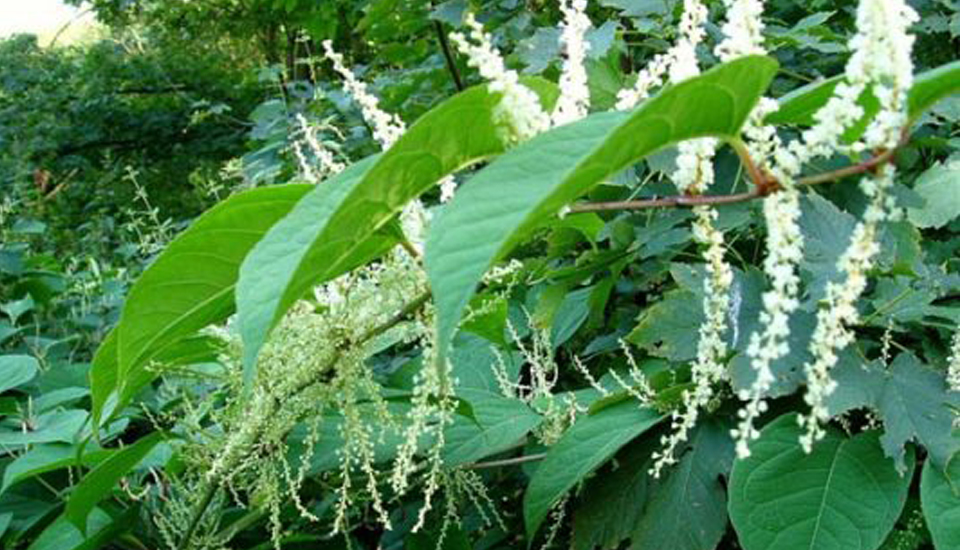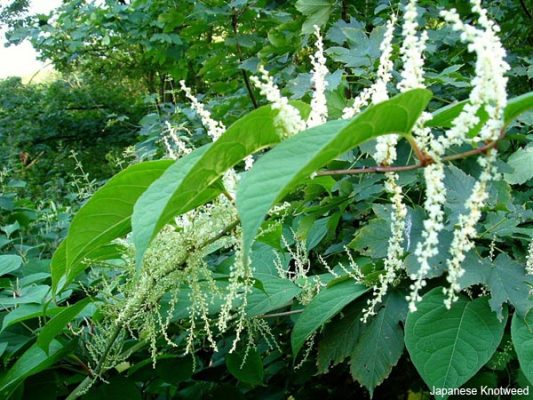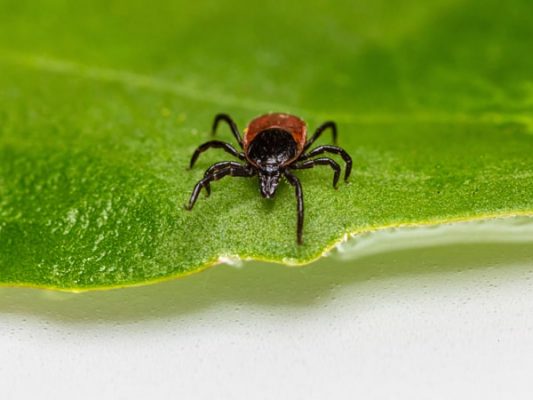7 Herbs That May Help Treat Lyme Disease
POSTED ON OCTOBER 19, 2020 BY TORONTO FUNCTIONAL MEDICINE CENTRE

Although doxycycline, a wide known antibiotic, is prescribed to treat Lyme disease, research shows that adjuvant herbal therapies (herbal treatments combined with doxycycline) may provide relief for persistent Lyme symptoms.
Moreover, herbal therapies may enhance the antimicrobial effect against Lyme disease; they may also reduce the need for patients to require long-term antibiotic treatments.
In this article, we outline how herbal treatments may tackle the bacteria that cause Lyme disease.
Understanding the Bacteria Behind Lyme Disease
Firstly, let’s understand the bacteria that spread Lyme disease. The Lyme disease-causing Borrelia bacteria are microaerophiles, meaning that they thrive in low oxygen. This group of microorganisms are tenacious, slow-growing pathogens. Out of 36 recognized species, 13 are either acknowledged or alleged to have caused Lyme disease.
Lyme disease is a common tick-born disease in both Europe and North America. The bacterial microorganisms that spread Lyme disease are known as Borrelia burgdorferi sensu lato; these include the species Borrelia burgdorferi sensu stricto, the main cause of Lyme in North America. The predominant species that cause Lyme disease in Europe are Borrelia afzelii and Borrelia garinii.
The actively growing forms of Borrelia are spirochetes, corkscrew-shaped bacteria that cause Lyme. They are motile and can survive viscous conditions, including human and animal blood; they’re even capable of entering cells. When these bacteria are exposed to unfavourable conditions, they can adopt hidden, inactive or dormant forms such as cysts or granular forms and aggregates (biofilm-like structures).
Knowing the anatomy of spirochetes has helped scientists recognize the persistence of Lyme disease. Borrelia burgdorferi is theorized to have the ability to alter and re-convert into cystic form with thick-walled structures; this may explain why Lyme may act insistently and/or pop up after staying “quiet” for so long.
Also, genomic studies show that Borrelia burgdorferi sensu lato has a gene for its efflux or “pumping” mechanism, allowing the bacteria to pump out antibiotics used to treat Lyme disease. This efflux mechanism may be responsible for the bacteria’s ability to foster antibiotic resistance, though more studies are needed to prove this. These aspects all highlight the need for either new or improved treatments against the Borrelia bacteria, including herbal therapies.
The Role of Herbs in Treating Lyme Disease
Studies have shown that herbal adjuvant therapy may benefit Lyme disease treatments. In fact, one specific study considered the combination of doxycycline and herbs; it showed that herbs could enhance the action of the antibiotic agent, subsequently working synergistically against Borrelia burgdorferi, one of the main bacteria that cause Lyme disease.
During this particular study, doxycycline combined with the herb Scutellaria Baicalensis (Chinese Skullcap) attacked the latent, rounded forms of Borrelia when compared with doxycycline alone. (Baicalein is the active substance of Chinese Skullcap (Scutellaria Baicalensis), an antioxidant and neuroprotective agent that has a calming, anti-excitatory activity due to its effect on GABA receptors.)
Another recent in-vitro study showed the effects of herbs against growing and non-growing forms of Borrelia burgdorferi. Researchers found seven beneficial and natural agents that enhance the antimicrobial action against Borrelia. These include:
- Japanese Knotweed (Polygonum cuspidatum): This antioxidant herb demonstrates anti-inflammatory, cardio protective, and neuroprotective benefits. It strongly constrains cytokine cascades triggered by bacteria. (Note: Cytokines – cell-signalling molecules that uphold cell-to-cell communications in immune reactions – encourage cells to travel to areas of trauma, inflammation and infection in the body). Resveratrol, one of the active compounds in Japanese Knotweed, has antimicrobial effects against spirochete forms of Lyme
- Cats Claw (Unicaria tomentosa): This herb has demonstrated in-vitro effects against Borrelia. It has been proven to have anti-inflammatory, antiviral, neuroprotective, and DNA-repairing properties.
- Cryptolepis (Cryptolepis sanguinolenta): Contains antifungal, antibacterial, anti-inflammatory, and anti-amoebic properties, efficiently attacking the stationary forms of Borrelia burgdorferi. (Note: the stationary phase of Borrelia is when the cells replicate slowly or not at all; they’re known as “persister cells” because of their antibiotic resistance.)
Artemisia (Artemisia annua): Artemisinin, in its active compound, has a history of more than 2,000 years of use in the medical community. It may attack the stationary phase spirochetes of Borrelia. - Chameleon Plant (Houttuynia cordata): Houttuynia helps reduce the cytokine cascade, therefore decreasing the inflammatory processes of Borrelia.
- Chinese Skullcap (Scutellaria Baicalensis): Baicalein is the active substance in this herb. It demonstrates antioxidant, neuroprotective, and anti-excitatory effects, enhancing the action of traditional antibiotic agents, such as doxycycline. Its anti-excitatory activity lies in its interaction with the GABA receptors.
- Black walnut (Juglans nigra): Black walnut has antioxidant and antibacterial compounds. Green hull extract from the black walnut has been shown in vitro to be effective against Borrelia spirochetes (round bodies and biofilm structures).
Furthermore, certain blends of herbs have shown antibacterial activity against Borrelia burgdorferi. Research has shown that a one-week treatment with 1% Ghanaian quinine (Cryptolepis sanguinolenta) managed to eradicate Borrelia in vitro, preventing the bacterium from multiplying. The same potency was evident by Japanese knotweed. Both herbs were able to destroy entire micro colonies of Borrelia in vitro.
The studies above demonstrate the potential of herbs being used to treat persistent, antibiotic-resistant forms of Borrelia infections. Although further clinical trials are necessary, health care practitioners are prescribing natural and botanical agents for persistent Lyme symptoms.
Treating Your Lyme Symptoms
Currently, our clinic is inviting new and existing patients to discuss how we can help alleviate Lyme symptoms with natural considerations. We practice integrative functional medicine, a fusion of naturopathic and functional medicine as treatment for lyme disease. Our integrative Lyme disease treatment program is managed by two health practitioners who jointly offer integrative/functional health programs for their patients. Please call (416) 968-6961 to book your appointment or click here to write us a message.
References
Goc A, Niedzwiecki A, Rath M. Cooperation of Doxycycline with Phytochemicals and Micronutrients Against Active and Persistent Forms of Borrelia sp. Int J Biol Sci. 2016;12(9):1093-1103. Published 2016 Jul 22. doi:10.7150/ijbs.16060
Datar, Akshita & Kaur, Navroop & Patel, Seema & Luecke, David & Sapi, Eva. (2010). In Vitro Effectiveness of Samento and Banderol Herbal Extracts on the Different Morphological Forms of Borrelia Burgdorferi. Townsend Letter, the Examiner of Alternative Medicine.
Feng Jie, Leone Jacob, Schweig Sunjya, Zhang Ying, Evaluation of Natural and Botanical Medicines for Activity Against Growing and Non-growing Forms of B. burgdorferi, Frontiers in Medicine, 2020,, DOI=10.3389/fmed.2020.00006
Goc A, Rath M. The anti-borreliae efficacy of phytochemicals and micronutrients: an update. Therapeutic Advances in Infectious Disease. 2016;3(3-4):75-82.
Hui KM, Wang XH, Xue H. Interaction of flavones from the roots of Scutellaria baicalensis with the benzodiazepine site. Planta Med. 2000;66(1):91-93. doi:10.1055/s-0029-1243121
Newman Osafo, Kwesi Boadu Mensah, and Oduro Kofi Yeboah, Antonio Ferrer-Montiel
Phytochemical and Pharmacological Review of Cryptolepis sanguinolenta (Lindl.) Schlechter
Volume 2017 |Article ID 3026370 | https://doi.org/10.1155/2017/3026370
Jiangang Fu, Ling Dai, Zhang Lin, Hongmei Lu: Houttuynia cordata Thunb: A Review of Phytochemistry and Pharmacology and Quality Control. College of Chemistry and Chemical Chinese Medicine, Vol.4 No.3(2013), Article ID:37184,23 pages DOI:10.4236/cm.2013.43015
Feng J, Leone J, Schweig S, Zhang Y. Evaluation of Natural and Botanical Medicines for Activity Against Growing and Non-growing Forms of B. burgdorferi. Front Med (Lausanne). 2020 Feb 21;7:6. doi: 10.3389/fmed.2020.00006. PMID: 32154254; PMCID: PMC7050641.
Anna Goc , Alexandra Niedzwiecki , Matthias Rath, Cooperation of Doxycycline with Phytochemicals and Micronutrients Against Active and Persistent Forms of Borrelia sp. 2016 Jul 22;12(9):1093-103.doi: 10.7150/ijbs.16060. e Collection 2016.
RECENT BLOG POSTS
How Does Lyme Disease Affect Your Hormones?
As we’ve discussed in our previous blog posts, Lyme disease can cause debilitating symptoms and[…]
Nov
7 Herbs That May Help Treat Lyme Disease
Although doxycycline, a wide known antibiotic, is prescribed to treat Lyme disease, research shows that[…]
Oct
Feed Your Body to Help Fight Lyme Disease: An Integrative Functional Medicine Approach
LYME DISEASE TREATMENT Feed Your Body to Help Fight Lyme Disease: An Integrative Functional Medicine[…]
Sep




